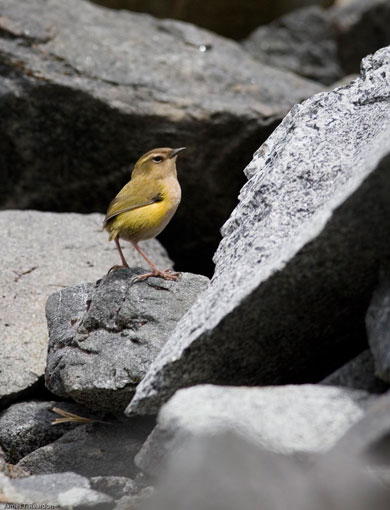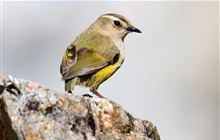Alpine adventurers help rock wren bounce back
Archived content: This media release was accurate on the date of publication.
Introduction
Rock wren in the Homer Saddle and Gertrude Valley are making a comeback from catastrophic decline thanks to a predator trapping project run by volunteers.Date: 29 July 2016

Rock wren at the Homer Saddle
Image: James Reardon ©
Rock wren in the Homer Saddle and Gertrude Valley are making a comeback thanks to a trapping project run by the Southland Section of the New Zealand Alpine Club (SSNZAC).
In 2012, the rock wren population in the area were in catastrophic decline. A team of DOC researchers found that all of the nests were being attacked by predators. To protect these vulnerable birds from local extinction, SSNZAC set up a predator trapping programme.
The number of rock wren in the Homer-Gertrude area is now steadily increasing. DOC has been monitoring the population and since 2013 the number of breeding pairs has increased from 10 to 33.
SSNZAC Committee member Stanley Mulvany said the club was thrilled by the impact of the predator control:
“We are really excited by the success of the rock wren population in our monitored areas. This programme seems to have made a significant difference to the survival of this, New Zealand's only true alpine bird".
“Our trapping programme is a team effort by SSNZAC, the Fiordland Tramping and Outdoor Recreation Club, the Hokonui Tramping Club and the Southland Tramping Club, assisted by the Department of Conservation.”
DOC Fiordland Operations Manager, Greg Lind, said rock wren monitoring results show the fantastic outcomes that can be achieved by community groups taking action for conservation.
“The work SSNZAC are doing is making a real and positive difference to the survival of rock wren in Fiordland. This project is a great example of how volunteer work being done by the community can produce amazing results.”
DOC will continue to monitor the rock wren population in the Homer-Gertrude area through the next breeding season.
Background information
Southland Section of the New Zealand Alpine Club:
- The Southland Section is an active section of around 85 members, based in the far south of New Zealand. The section has a special connection to the Homer-Gertrude area as they operate the Homer Hut which acts as a base for trampers and climbers visiting the area.
- SSNZAC currently have 20 single DOC 200 traps plus 20 double traps in the Upper Hollyford and Gertrude Valleys. The traps are checked 9 times a year.
Rock wren:
- Rock wren are only found in small pockets of the South Island’s high country. They are poor fliers and nest on the ground; making them easy targets for introduced predators.
- In areas where there is predator control, around 85% of rock wren nests are successful in fledging young. In areas where there is no predator control, nesting success is 0 – 30% and populations are at risk of extinction.
Contact
Michelle Crouchley, DOC Community Ranger
Email: mcrouchley@doc.govt.nz
Phone: +64 3 249 0229

